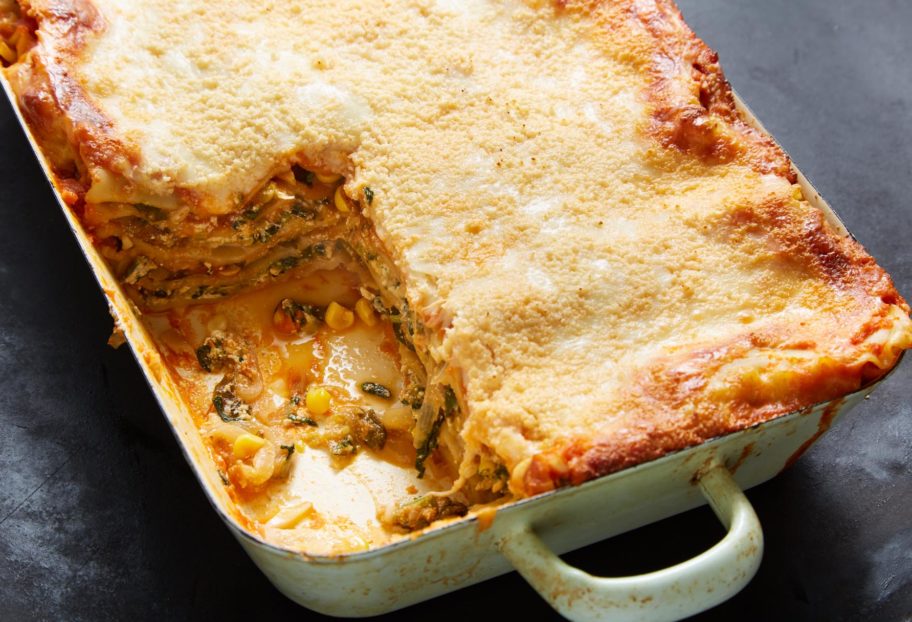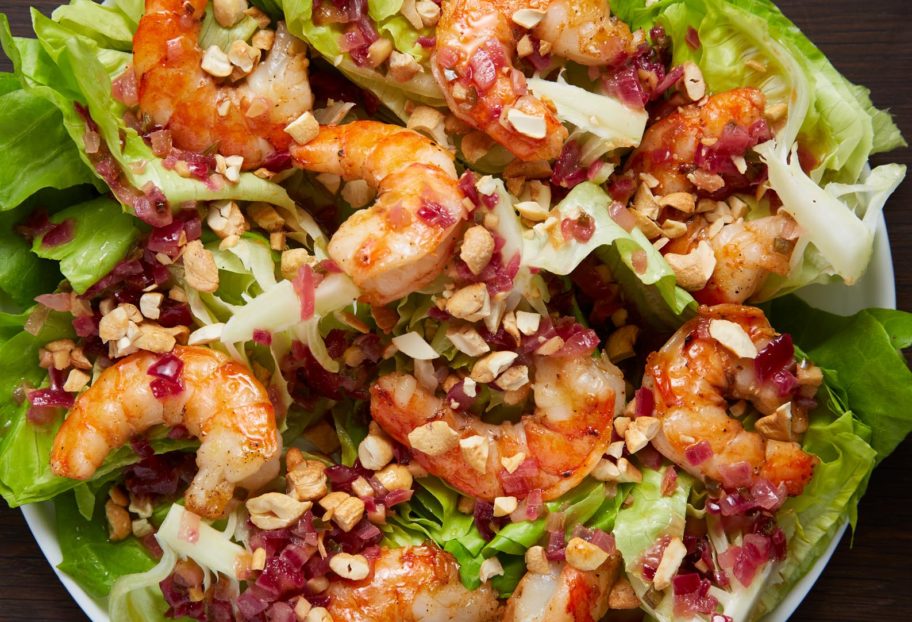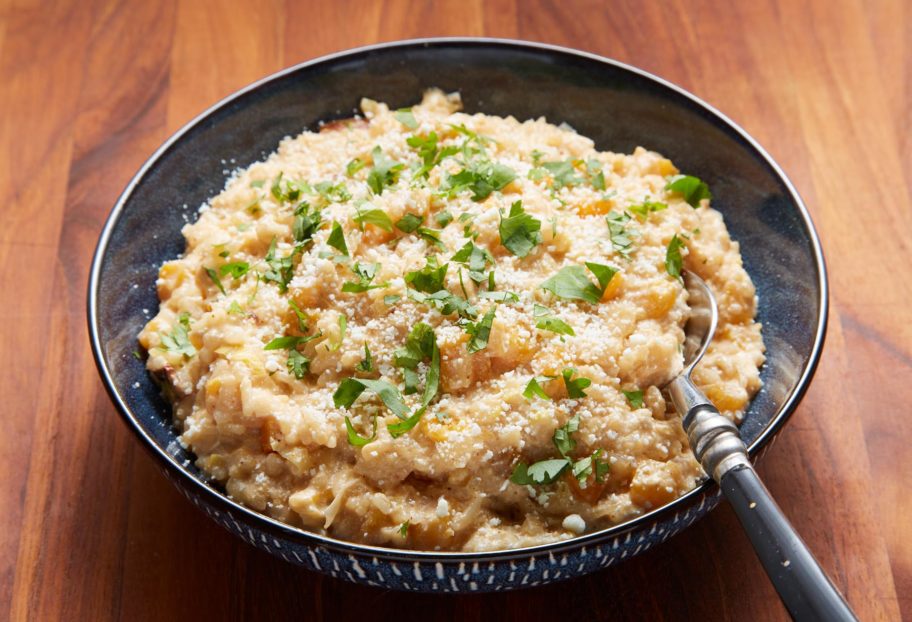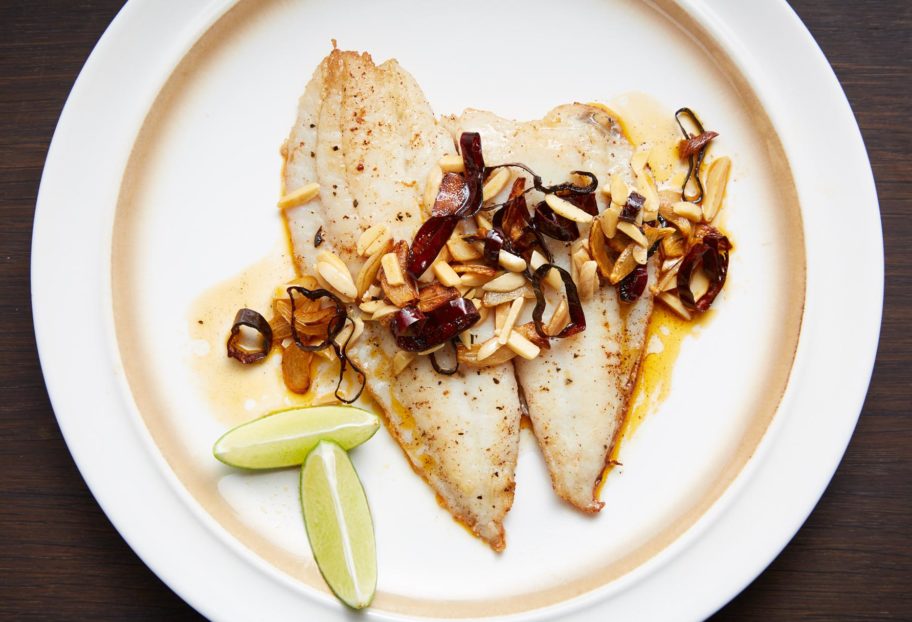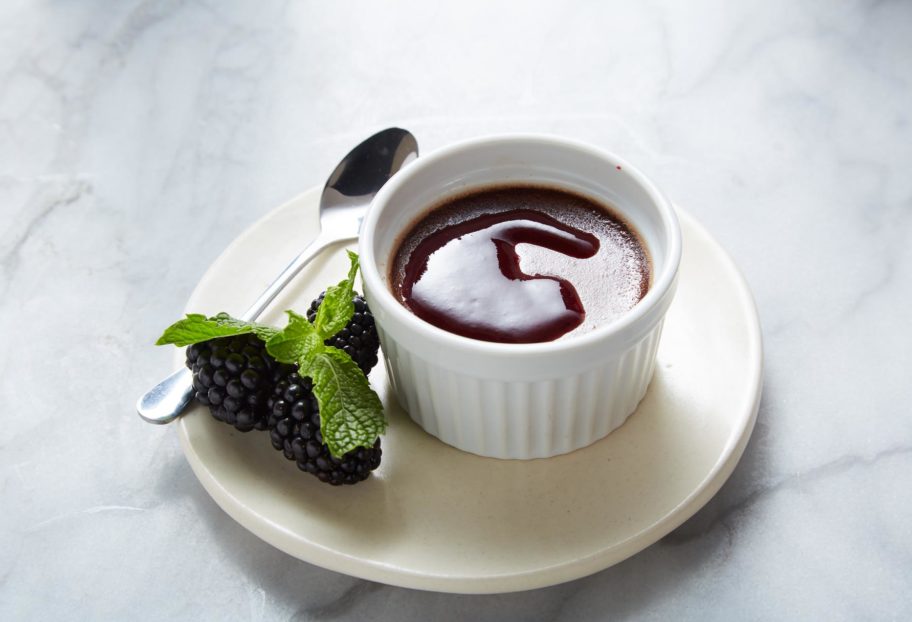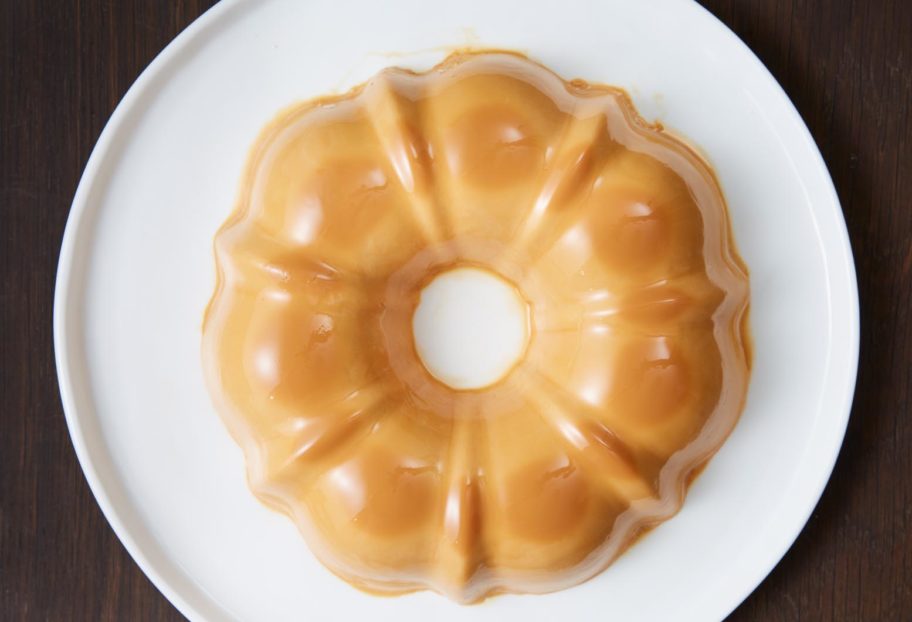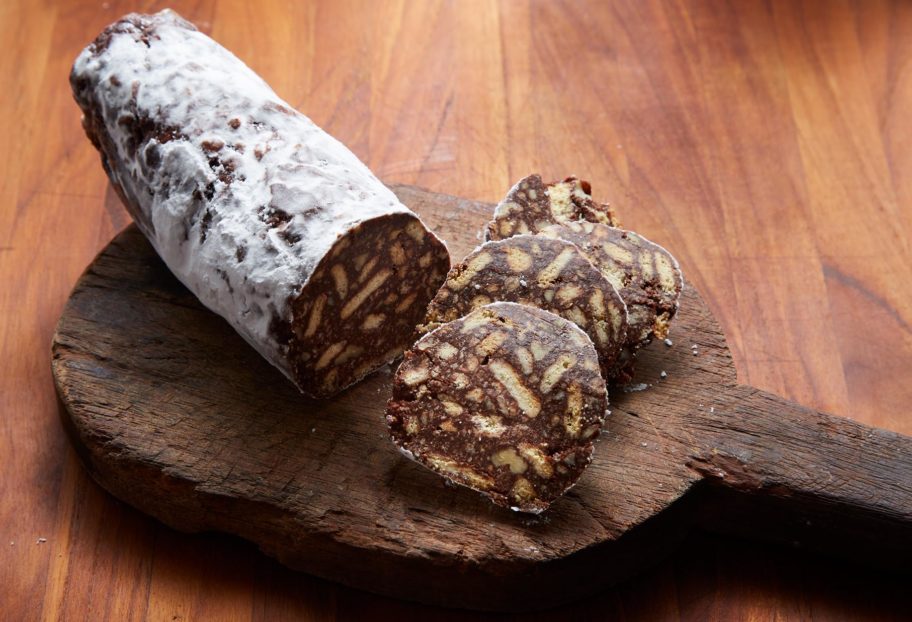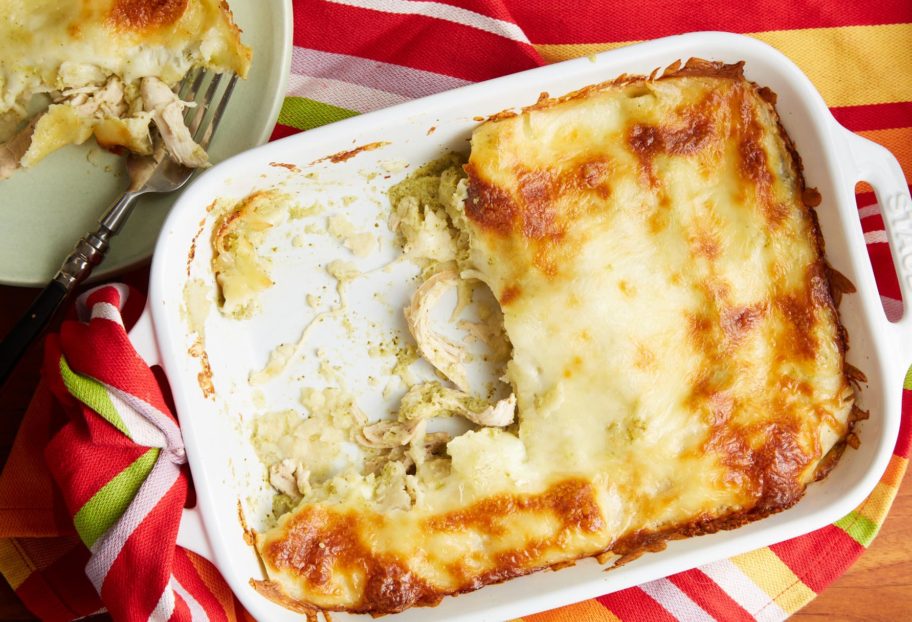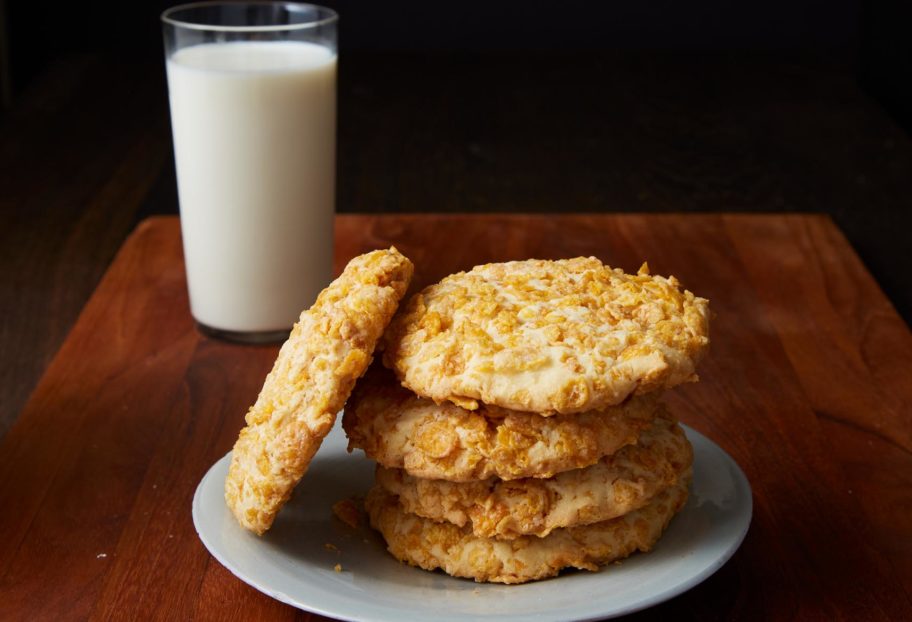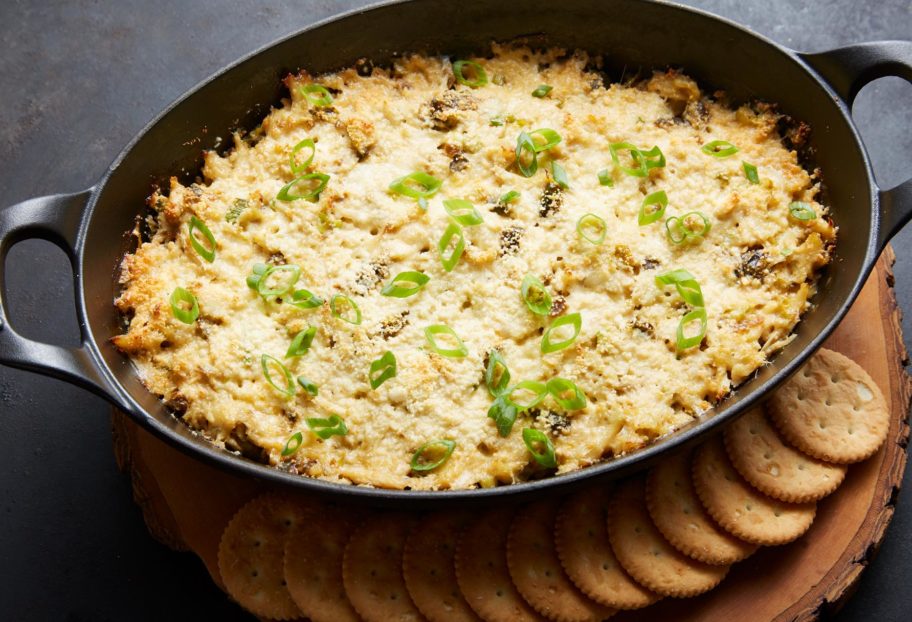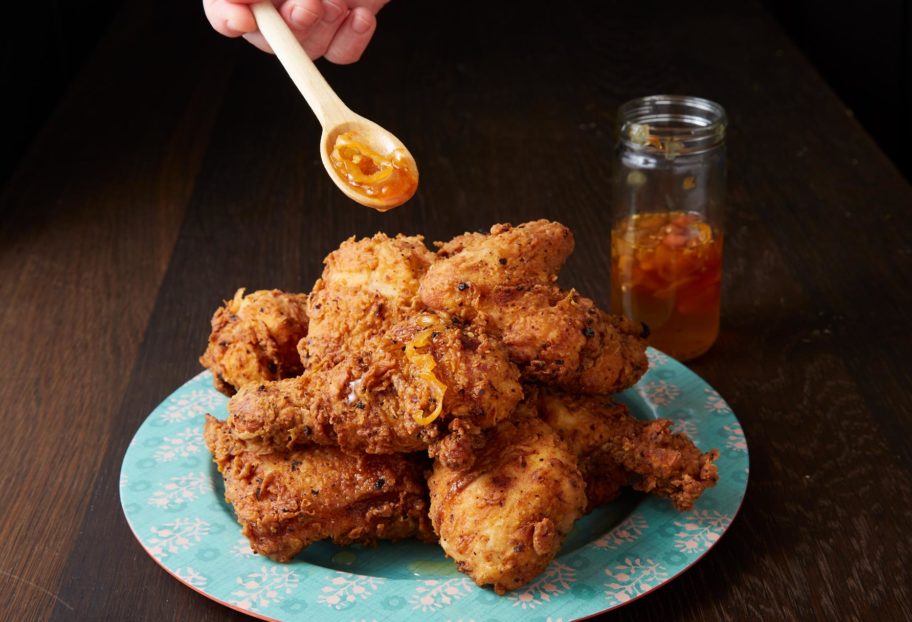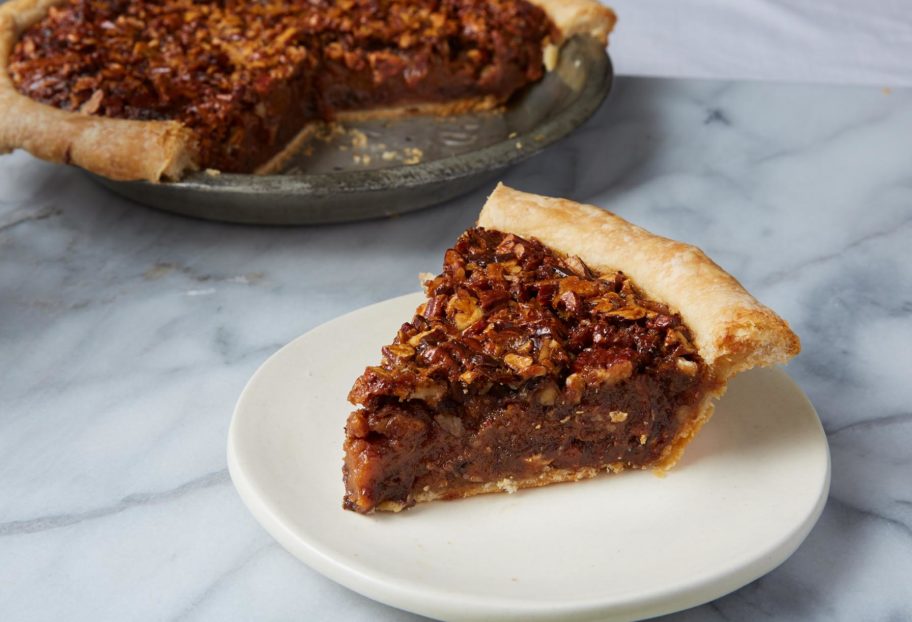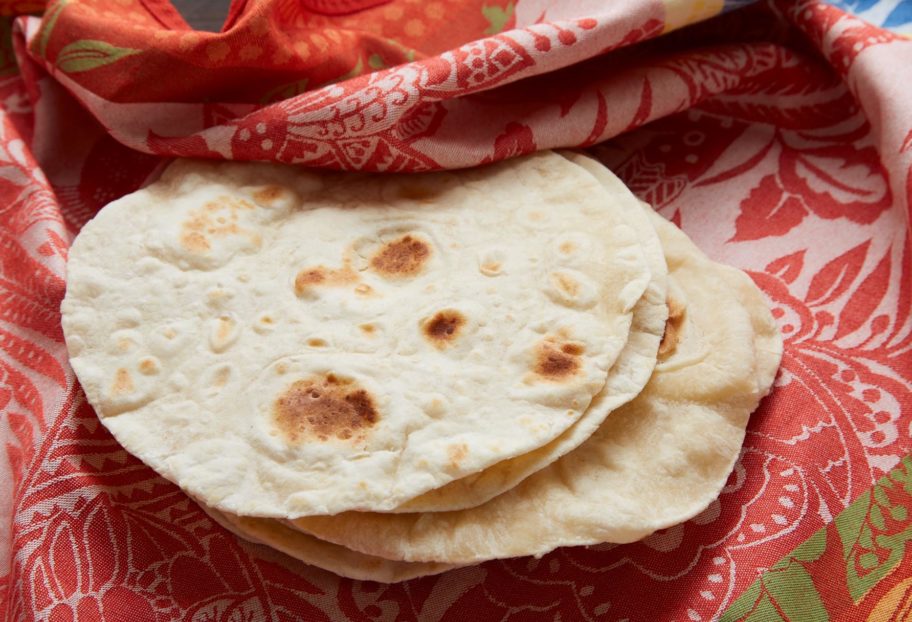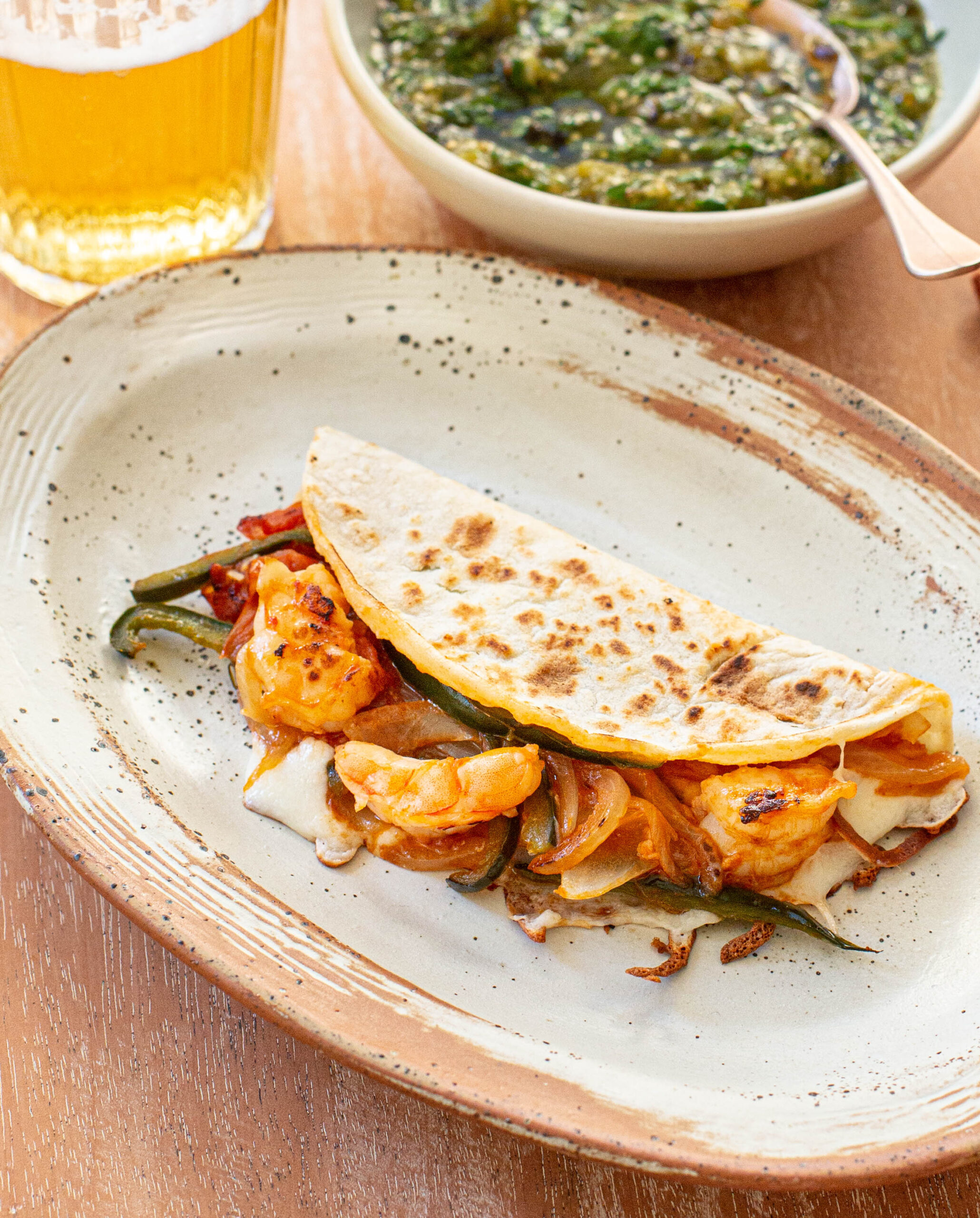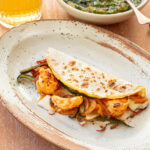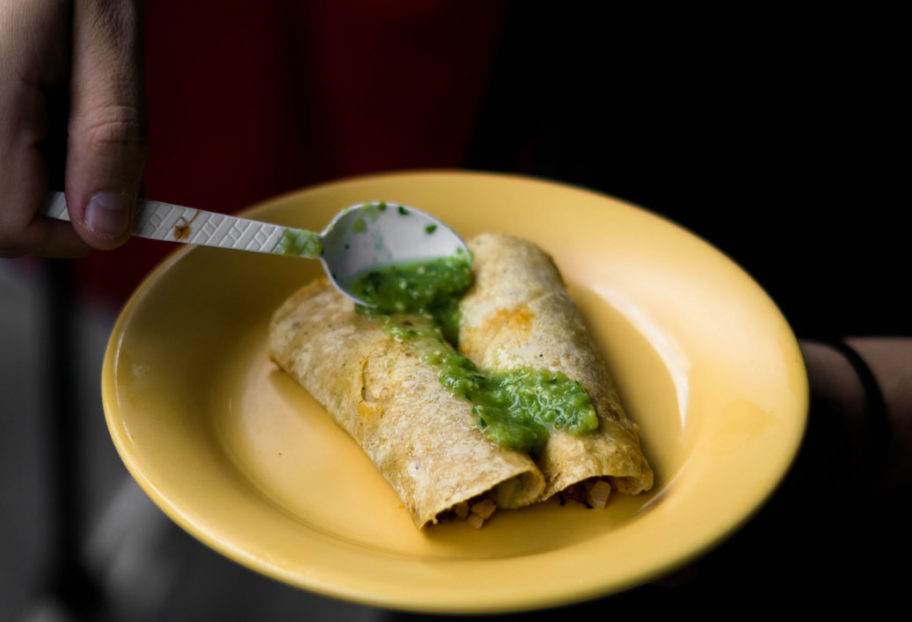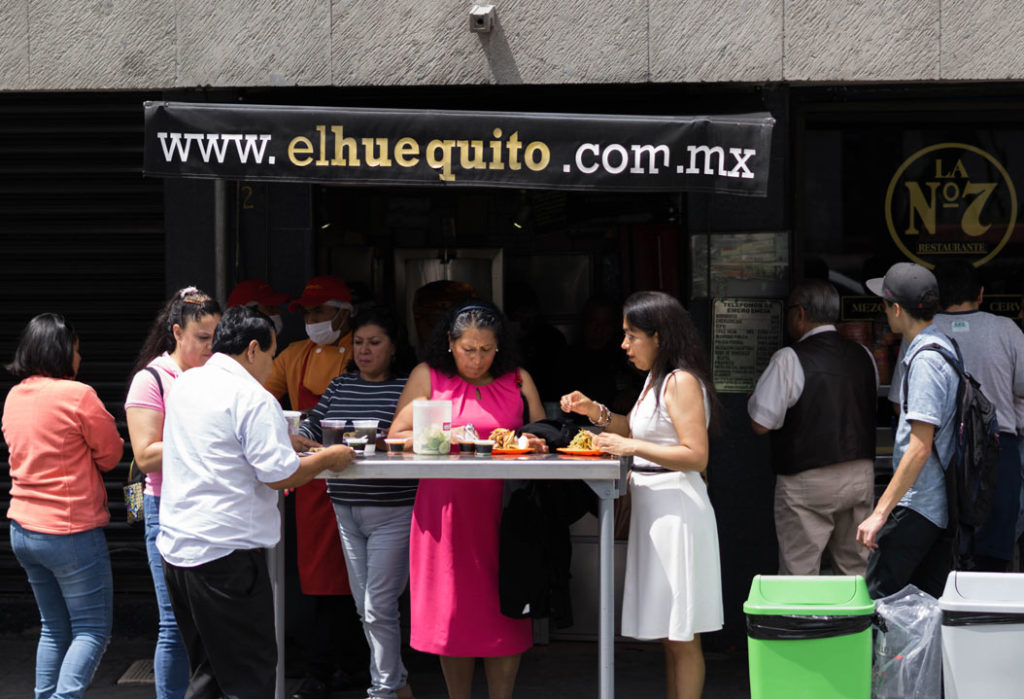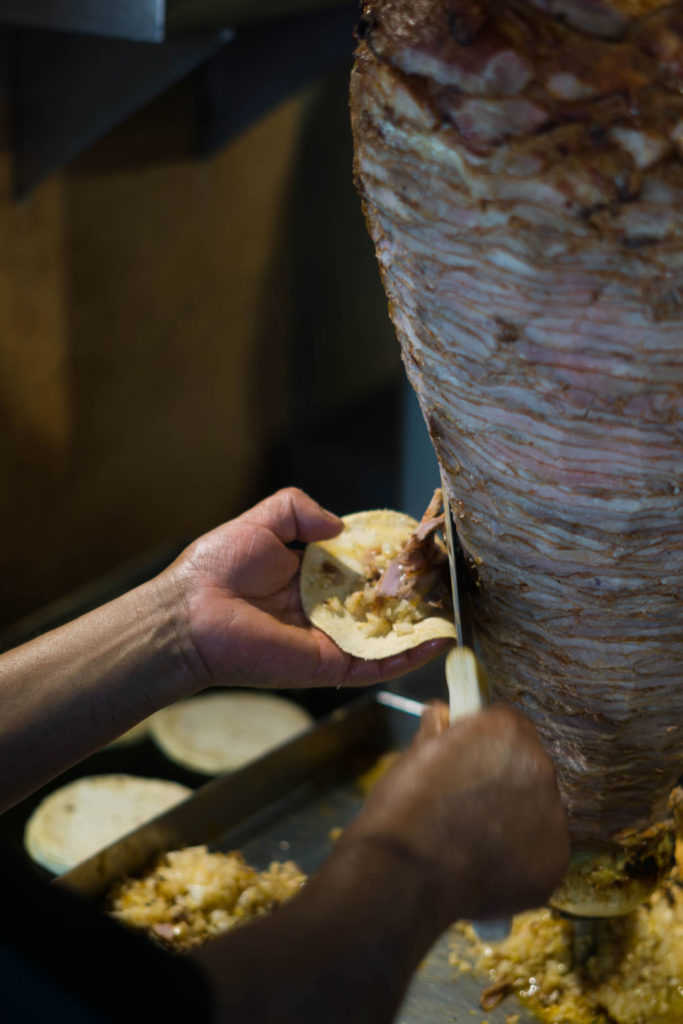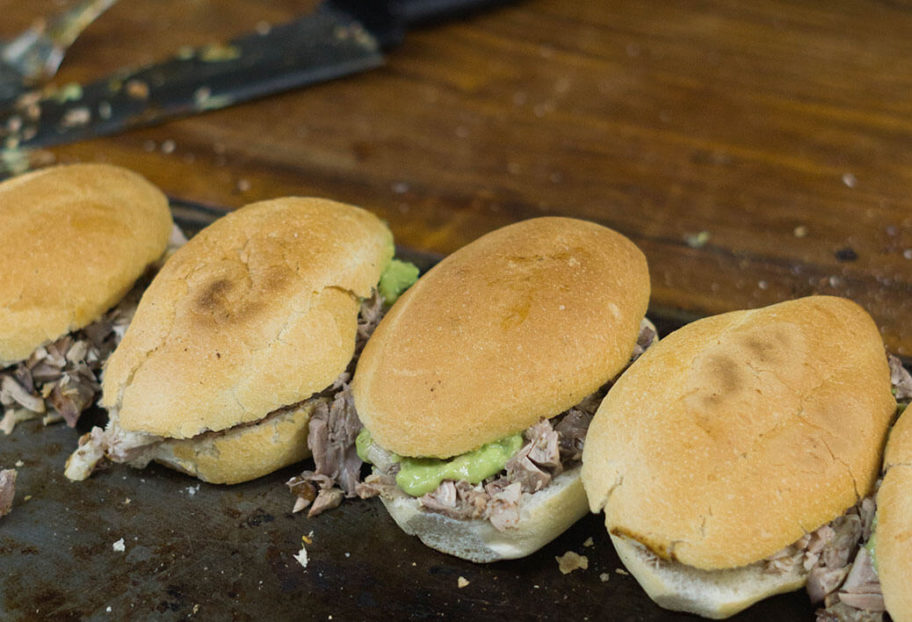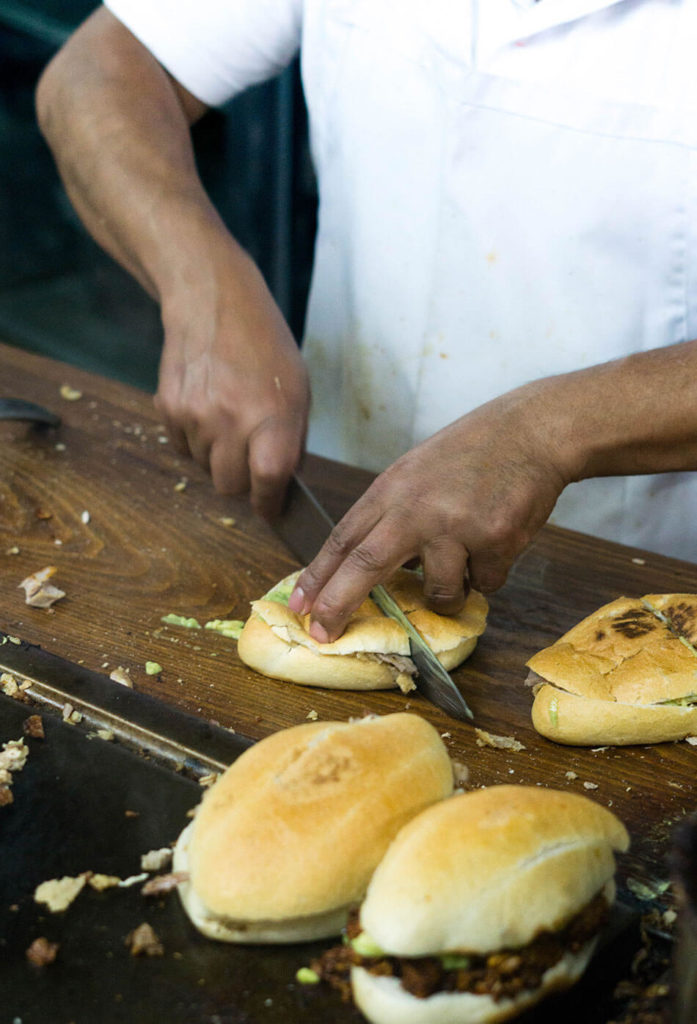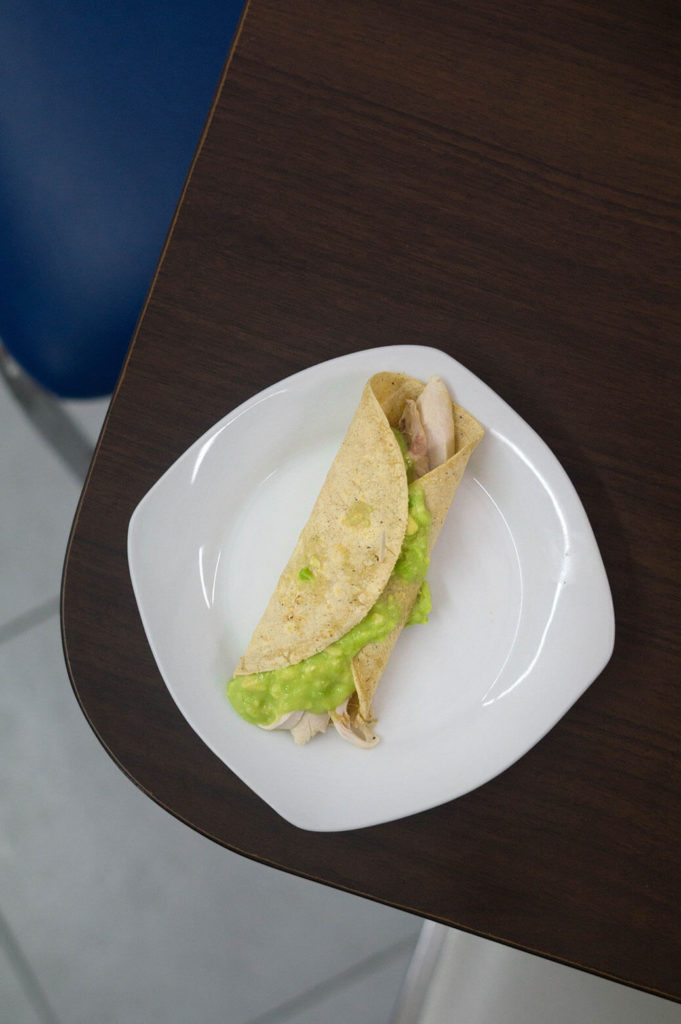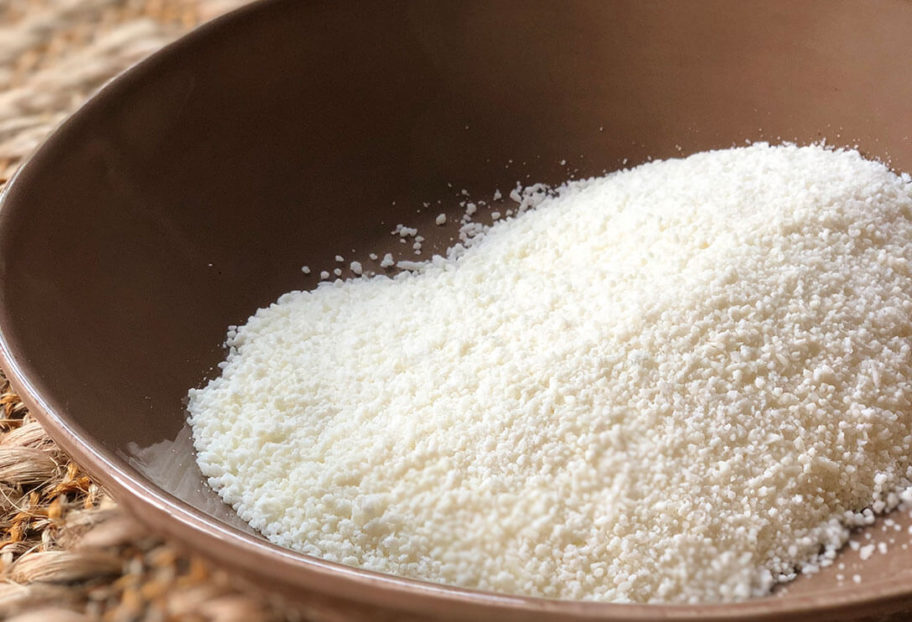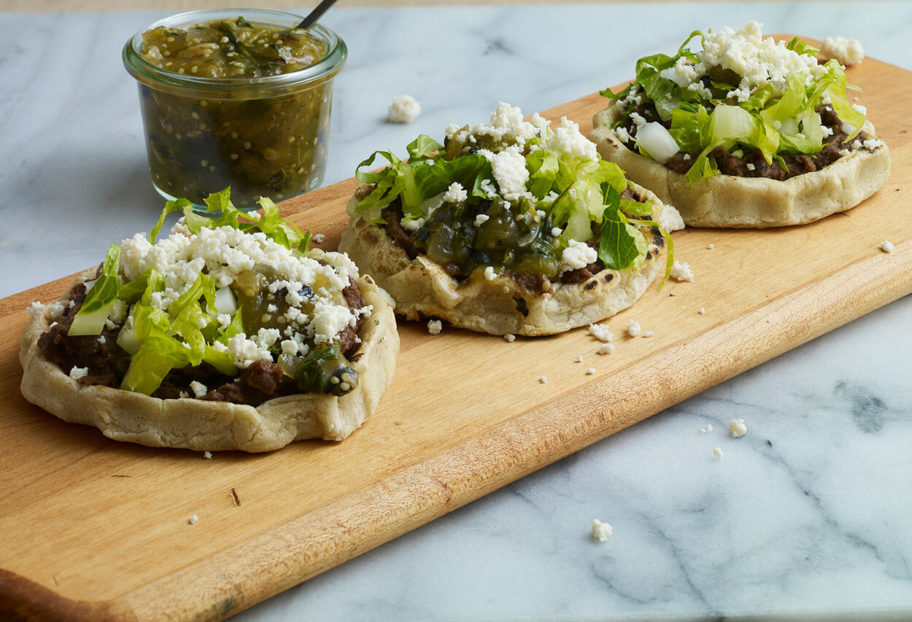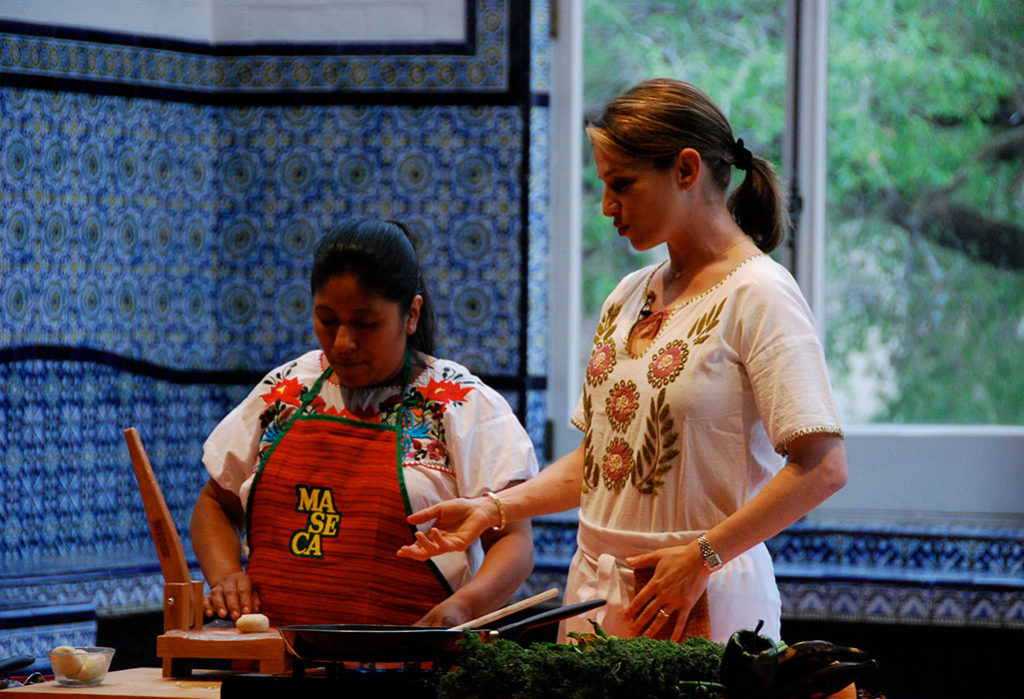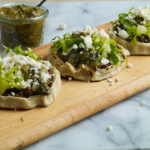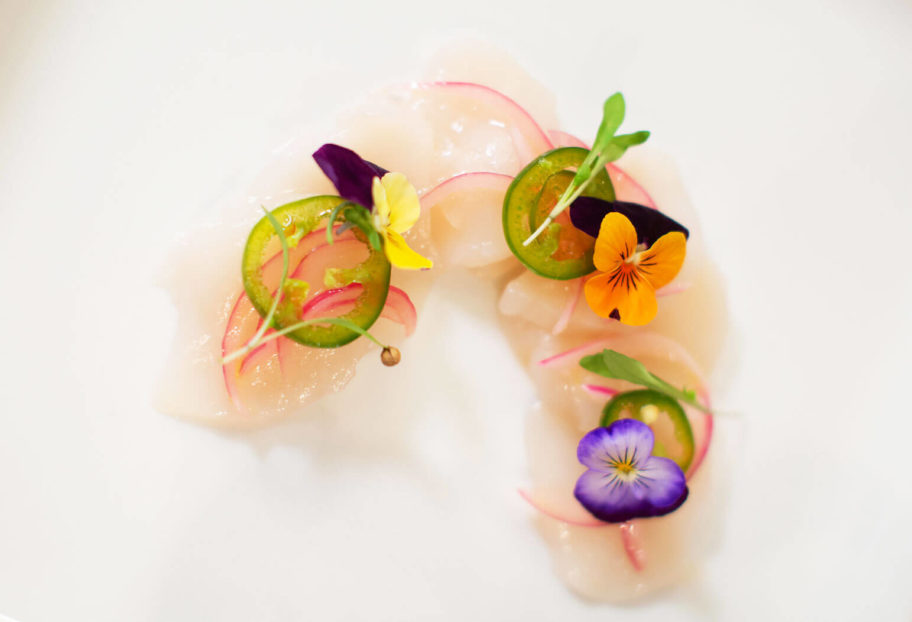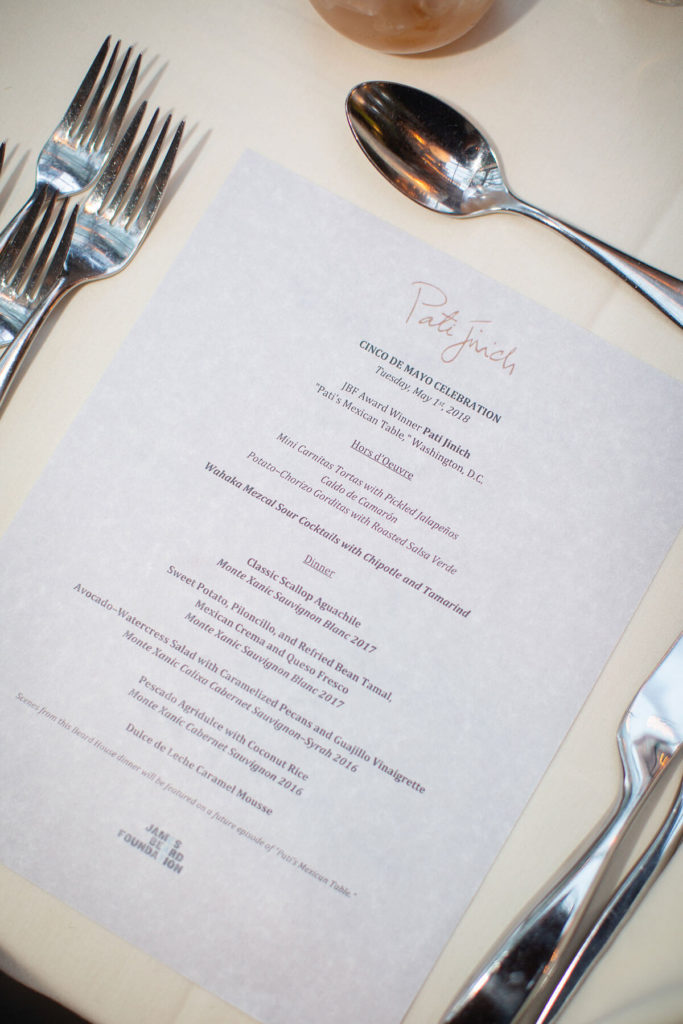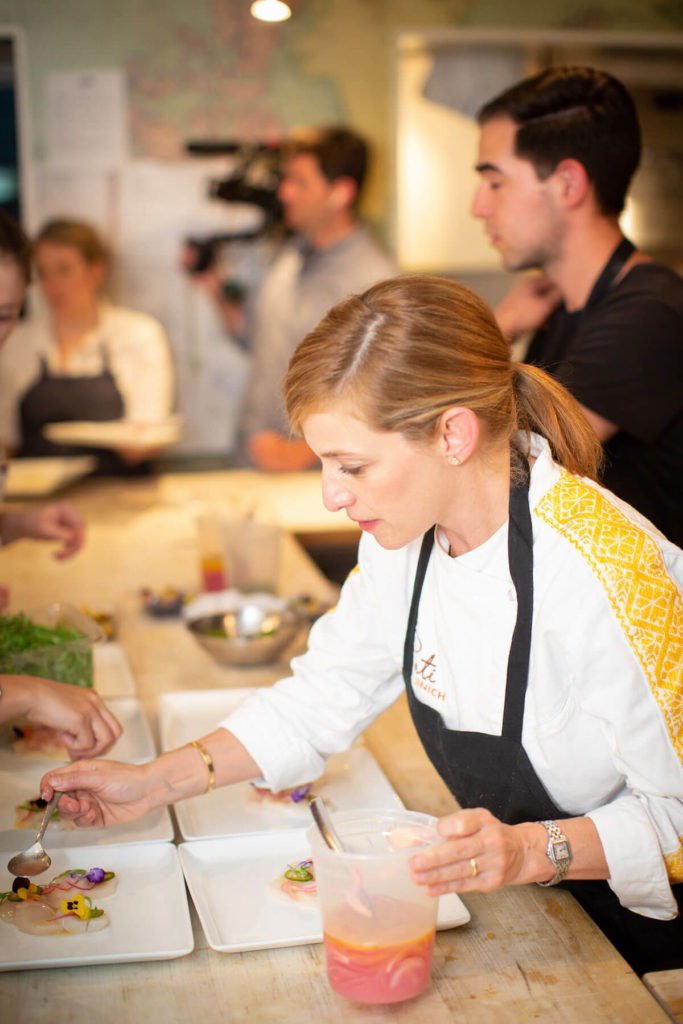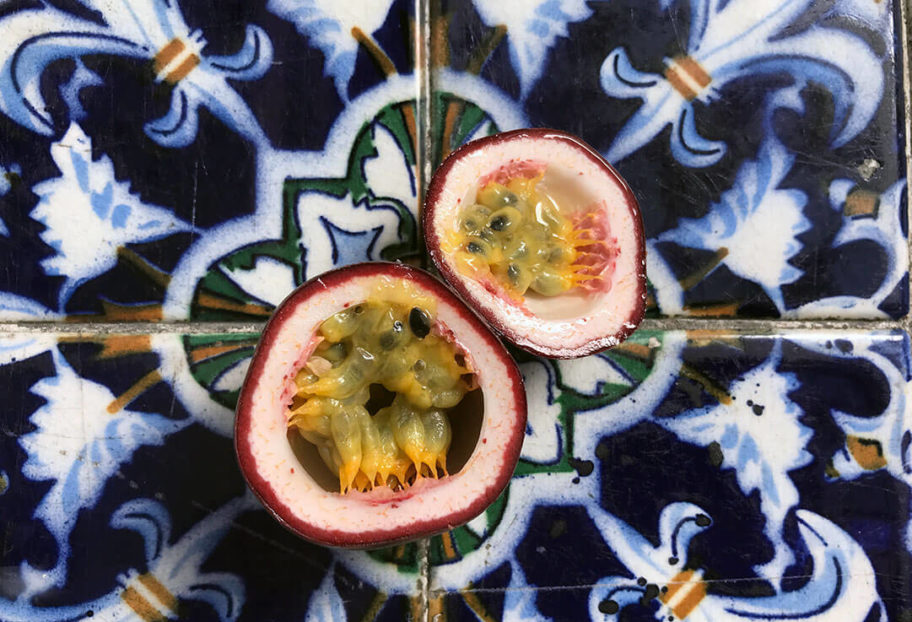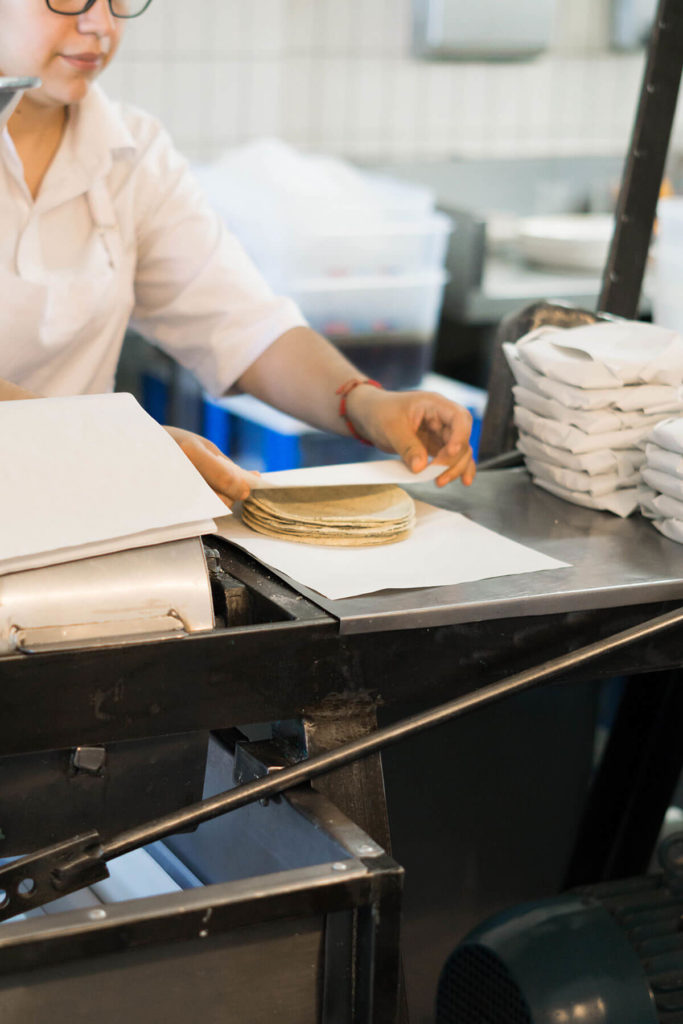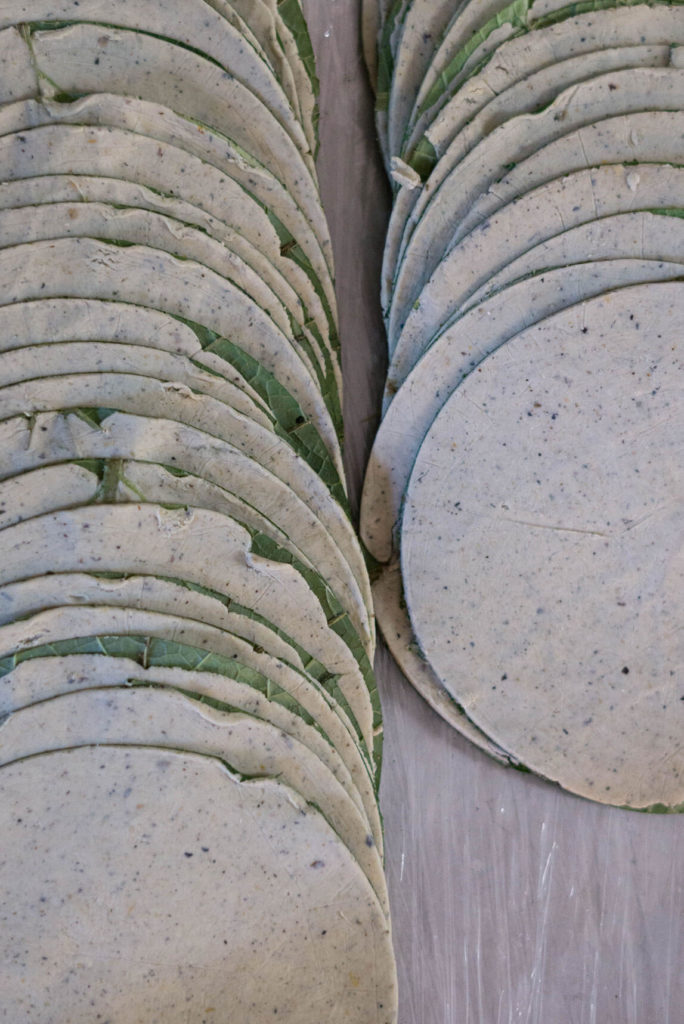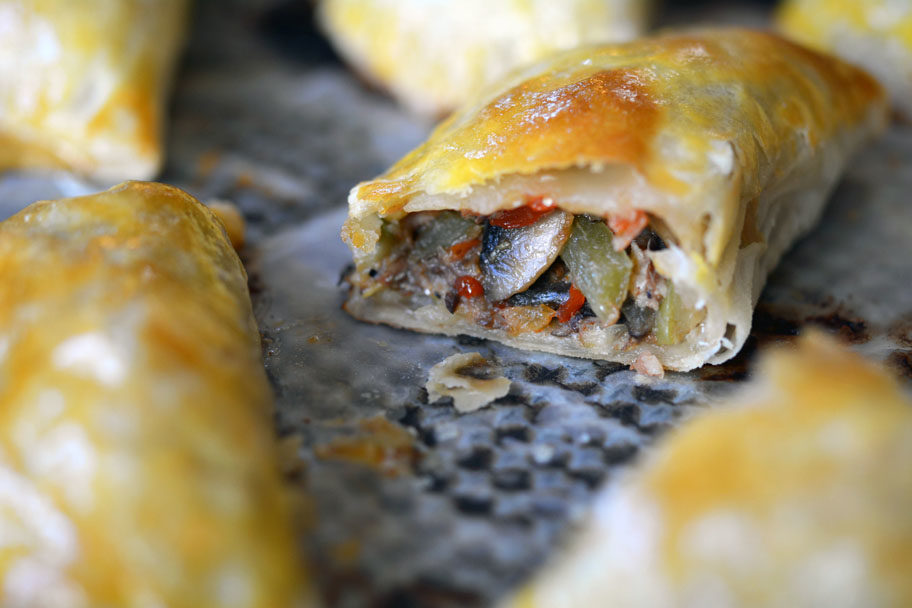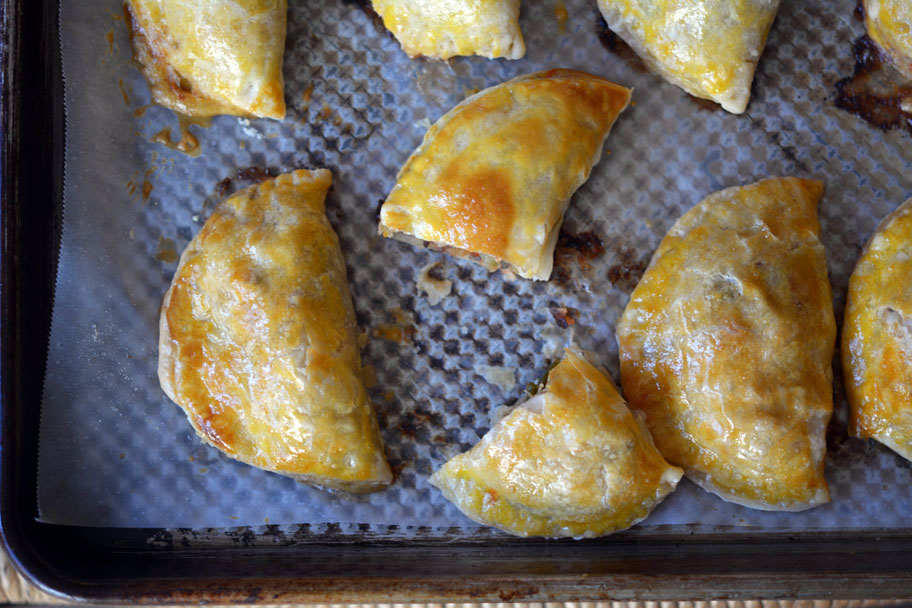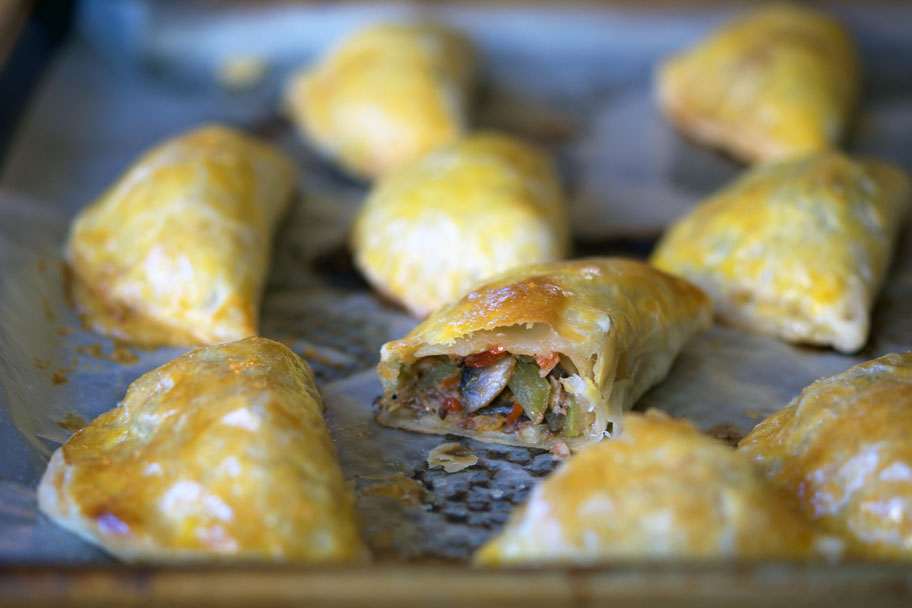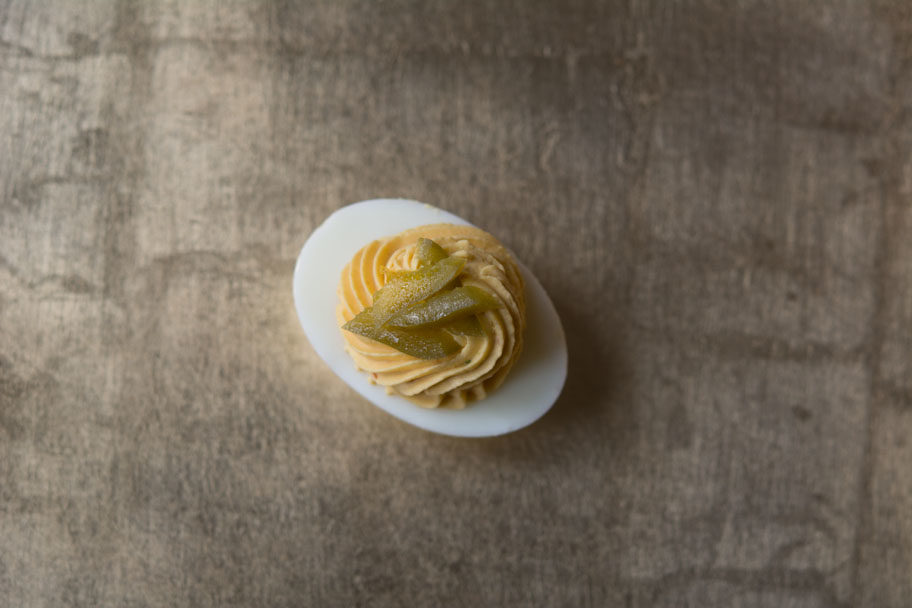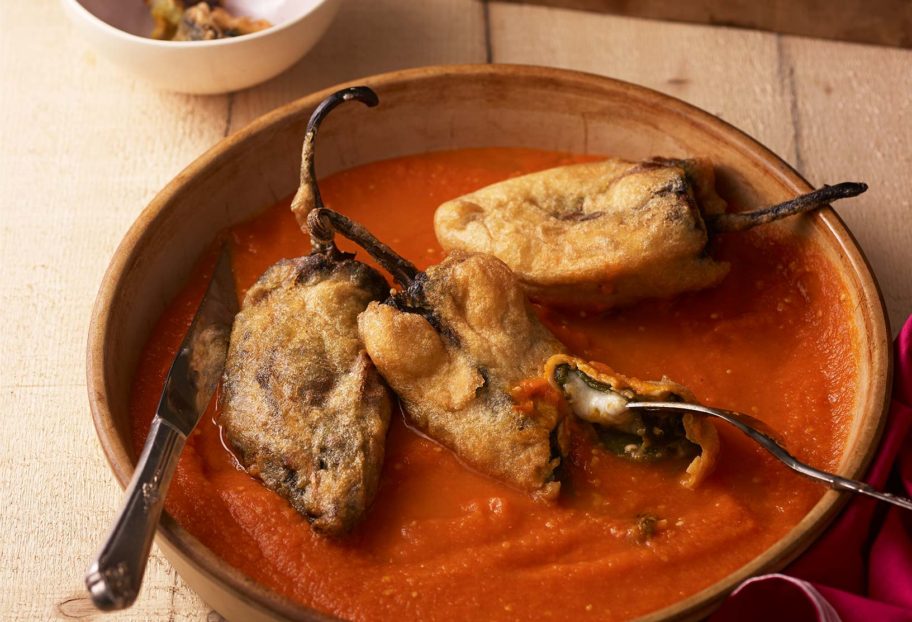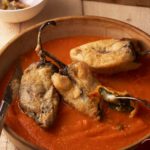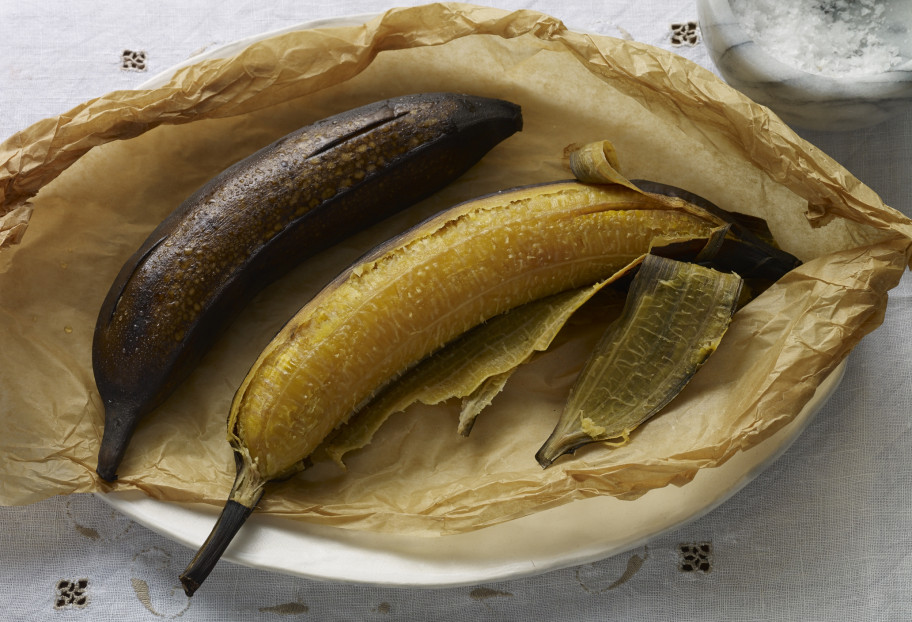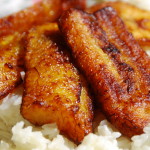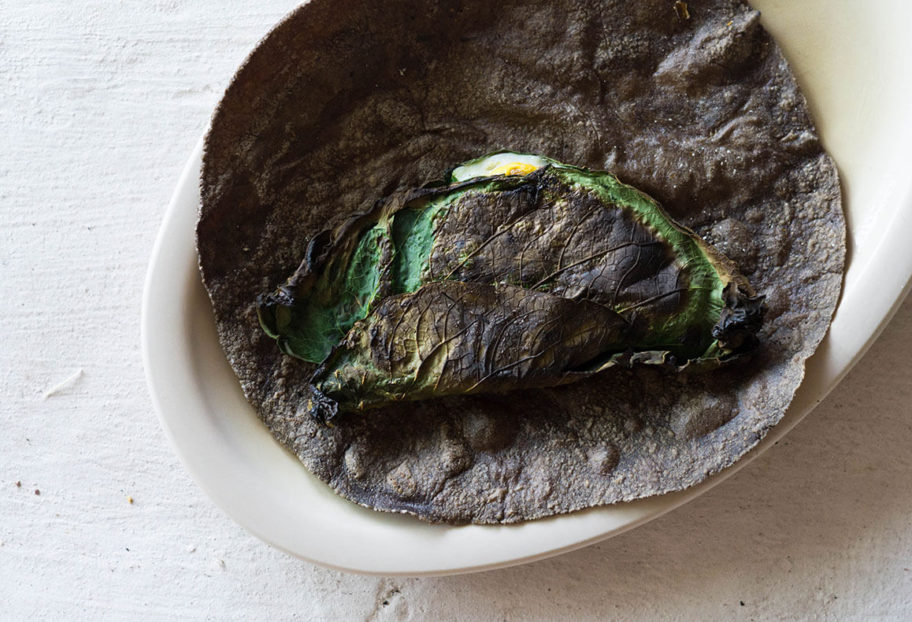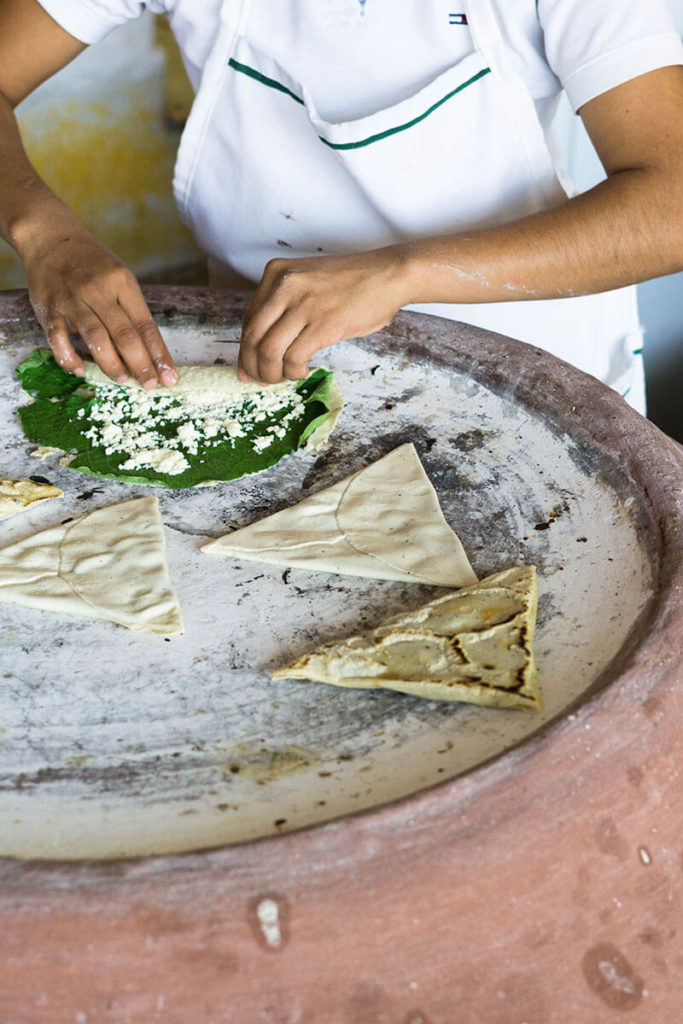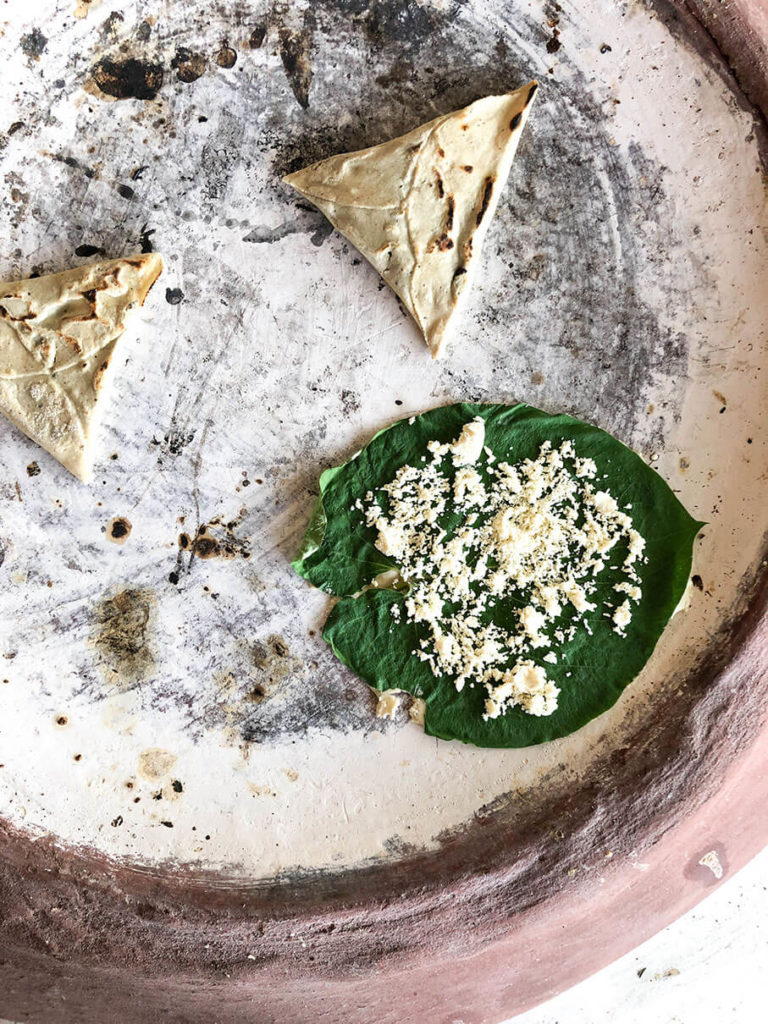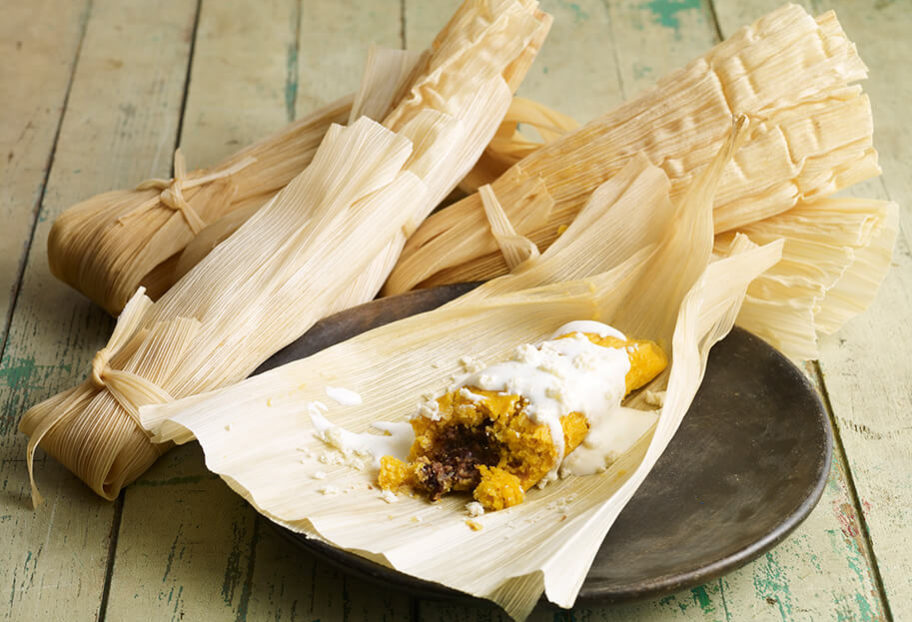Veggie Loaded Mexican Lasagna
Ingredients
For the Spinach and Mushroom filling:
- 1 pound baby spinach
- 2 tablespoons olive oil
- 2 tablespoons unsalted butter
- 1 leek halved, rinsed, thinly sliced (about 2 cups)
- 14-16 scallions white and light green parts thinly sliced (about 1 ½ cups)
- 2 garlic cloves peeled and finely chopped or pressed
- 8 ounces mushrooms cleaned and sliced
- 2 teaspoons kosher or sea salt or to taste
- Freshly ground black pepper
- 2 eggs lightly beaten
- 2 cups requesón or ricotta cheese
For the Zucchini, Poblano and Corn filling:
- 2 zucchinis (about 1 pound) diagonally and thinly sliced to about 1/8”
- 1 1/2 teaspoons kosher or sea salt or to taste, divided
- Freshly ground black pepper to taste
- 4 tablespoons olive oil divided
- 2 tablespoons unsalted butter
- 1 1/2 large white onions halved, slivered
- 4 poblano peppers roasted, sweated, cleaned, peeled and cut into julienne or slices
- 1 ear of corn kernels shaved off (about 1 cup)
For the Salsa Roja (makes about 4 cups):
- 2 pounds ripe tomatoes
- 2 garlic cloves
- 1 serrano or jalapeño chile more to taste
- 1 1-inch thick slice of a large white onion (about 2 ounces), peeled
- 1 teaspoon kosher or sea salt or to taste
- 3 tablespoons tomato paste
- 1 tablespoon vegetable oil
- 1 cup chicken or vegetable broth
To assemble the Lasagna:
- 2 tablespoons unsalted butter for greasing baking dish
- 1 pound lasagna noodles
- 2 cups grated Oaxaca or mozzarella cheese
- 1 cup (8 ounces) grated Cotija cheese or Parmesano Reggiano
Instructions
To make the spinach and mushroom filling:
- Bring salted water to boil in a medium saucepan. Once it is boiling, add the spinach and cook just for a minute, until it completely wilts. Drain and squeeze out as much water as possible with cheesecloth, a clean kitchen towel, or a wooden spoon. When cool enough to handle, coarsely chop and set aside.
- Heat the olive oil and butter in a large skillet over medium heat, add the leek and scallions and cook for 4 to 5 minutes, until softened. Add the garlic, stir, and cook for a minute, until fragrant. Raise the heat to medium high, wait a minute, and add the sliced mushrooms. Sprinkle in a teaspoon salt and black pepper, let them brown for a minute or two, and continue to cook until they let out their juices and begin to brown again, 4 to 5 minutes more. Once their juices have almost evaporated, add the chopped spinach, mix well, and continue cooking for another 4 to 5 minutes, until all the spinach juices evaporate. Turn off the heat, set aside, and let cool to room temperature.
- In a small bowl, beat the eggs, add the requeson or ricotta cheese, the remaining teaspoon salt, and mix well. Combine with the spinach and mushroom mixture and set aside.
To make the zucchini, poblano and corn filling:
- Heat 2 tablespoons of olive oil in a large nonstick skillet set over medium-high heat and season the zucchini slices with about ½ teaspoon salt and pepper to taste. Once the oil is hot, working in batches, brown the zucchini slices for a minute or so per side and transfer to a platter covered with paper towels. Set aside when you are done.
- Reduce the heat to medium, add 2 more tablespoons of olive oil and the butter. Once the butter has melted, stir in the onions. Cook, stirring occasionally and scraping the bottom of the pan, for 7 to 8 minutes, until they have completely wilted and have browned around the edges. Add the poblano pepper strips and 1 teaspoon salt, stir, and continue to cook for another couple minutes. Make room in the middle of the pan, add the corn kernels and cook for a couple minutes, stirring to combine with the rest of the mix. Remove from the heat and taste for salt, adding more if need be. Set aside.
To make the salsa roja:
- Place the tomatoes, garlic and chiles in a medium saucepan, cover with water and bring to a boil over medium-high heat. Reduce heat to medium and simmer for about 10 minutes, until the tomatoes are cooked and mushy. Place the tomatoes, garlic and chiles into a blender, along with the onion and salt and process until completely smooth.
- Heat the oil in medium saucepan set over medium heat. Once the oil is hot, pour in the pureed tomato mixture, cover partially with a lid and simmer for 5 minutes, stirring here and there. Add the tomato paste and mix well. Pour in the chicken broth, stir, and cook for another 5 minutes, until well seasoned and thickened. Set aside.
To assemble the lasagna:
- Generously butter a 9”x13” baking dish. Bring salted water to a boil in a large pot. Cook the lasagna noodles per package instructions, or for 8 to 9 minutes, stirring them as they cook so they won’t stick. Drain and immediately lay them out them on an oiled baking sheet.
- Set a rack in the middle of the oven and preheat to 375 degrees Fahrenheit.
- Spread about 1/2 cup tomato sauce onto the bottom of the buttered baking dish. Place a layer of cooked lasagna noodles over the sauce, draping them so they coat the entire surface. Spread half the spinach and mushroom filling over the noodles.
- Place a second layer of cooked lasagna noodles. Top with half of the poblano and corn mixture and half of the zucchini slices. Cover with about a cup of the salsa roja.
- Place a third layer of cooked lasagna noodles. Top with the other half of the spinach and mushroom filling.
- Place a fourth layer of cooked lasagna noodles. Add the remaining half of the poblano and corn mixture, the rest of the zucchini slices, and about a cup of the salsa roja.
- Place fifth layer of cooked lasagna noodles and cover with the remaining cup of tomato sauce. Add the grated Oaxaca or mozzarella cheese, and top with the Cotija cheese or parmesano reggiano.
- Cover the baking dish loosely with aluminum foil, making sure it is tight all around the edges, but that there is a lot of space over the cheese - like a tent or bubble - so the aluminum is not very close to the cheese on top.
- Place baking dish on a baking sheet and put into the oven. Bake for 40 minutes, then carefully remove the aluminum foil and return to the oven for another 25 to 30 minutes. The top should have melted, browned and begun to crisp along the edges. Remove from the oven and let the lasagna sit for 10 minutes before cutting into it.

